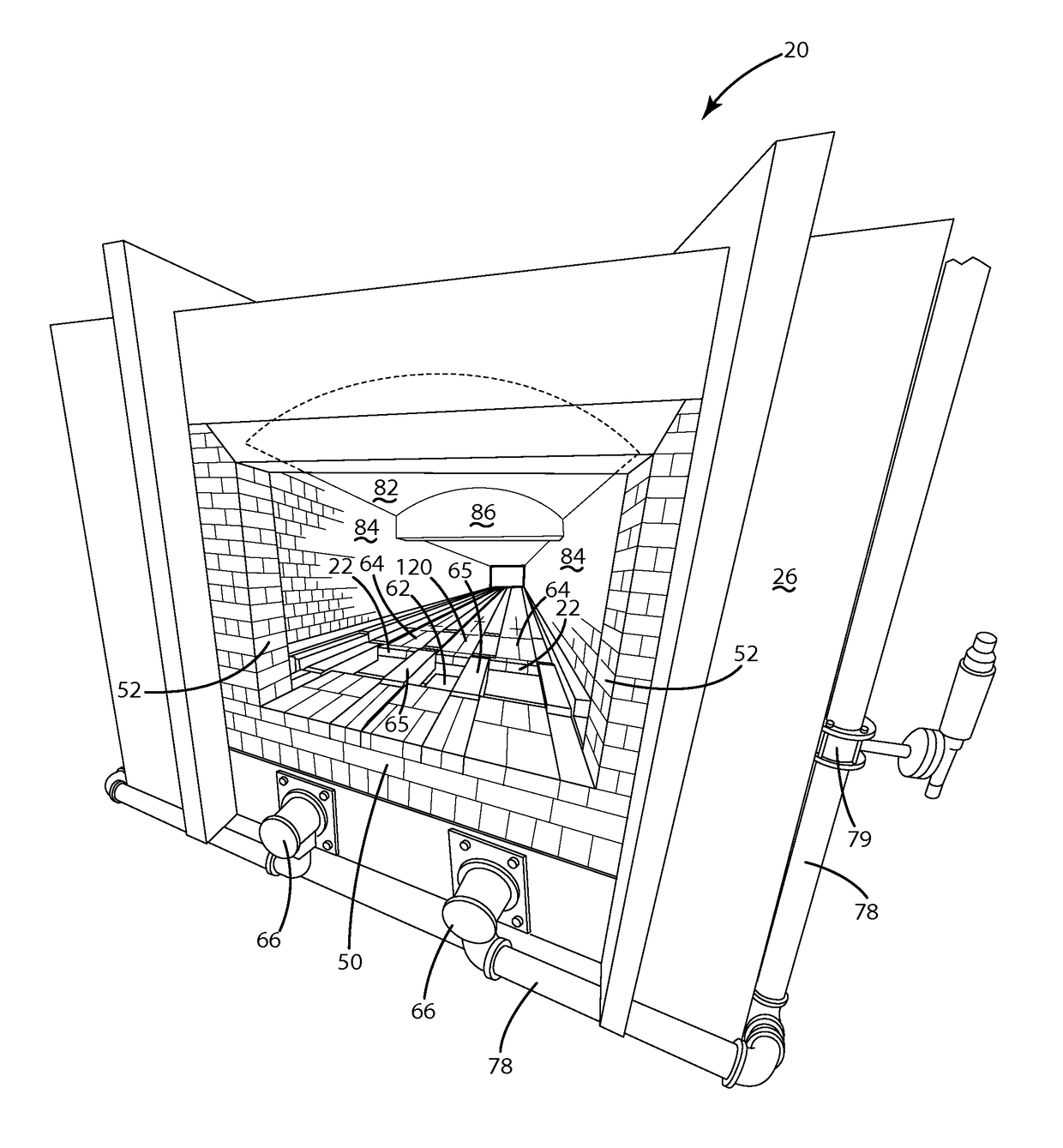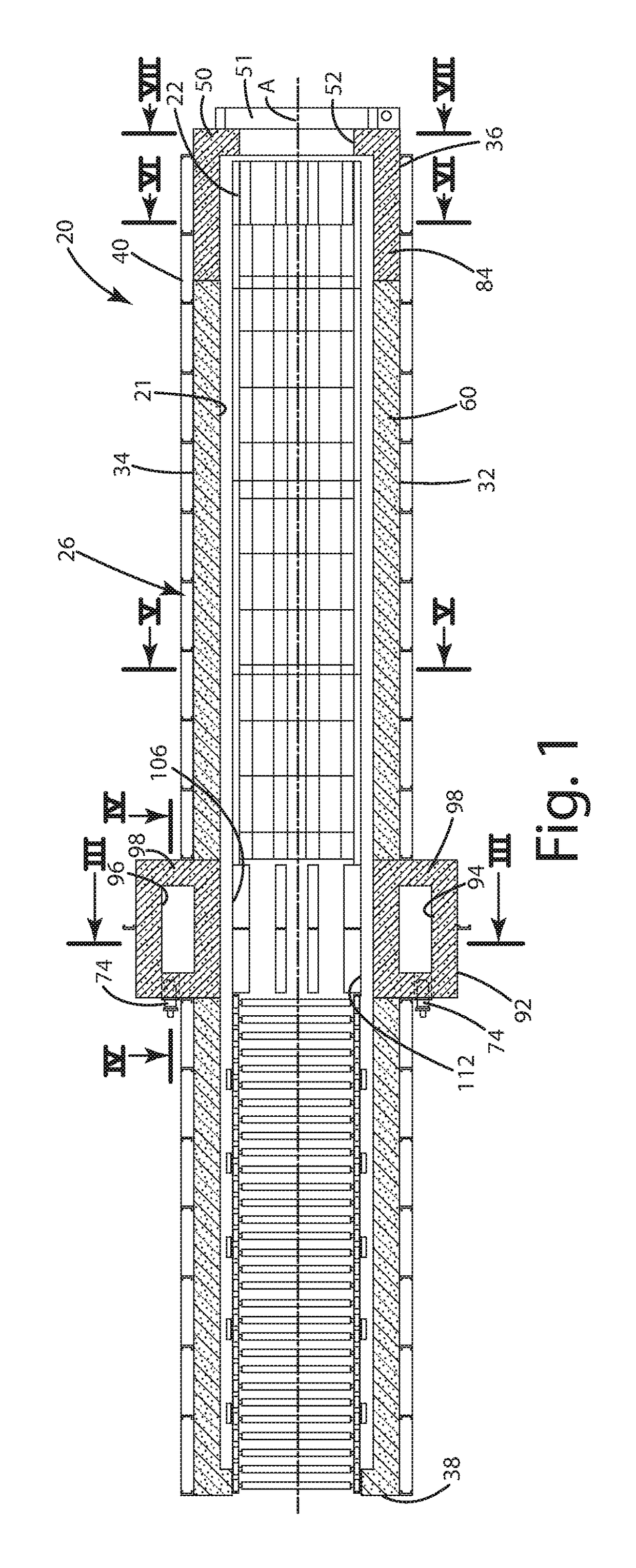Furnace assembly
a technology for furnaces and furnaces, applied in furnaces, charge manipulation,foundry moulding apparatuses, etc., can solve the problems of affecting the later molding process, and consuming a lot of time, so as to achieve the maximum heating of molds, improve heat control, and melt wax as quickly as possibl
- Summary
- Abstract
- Description
- Claims
- Application Information
AI Technical Summary
Benefits of technology
Problems solved by technology
Method used
Image
Examples
Embodiment Construction
[0028]Referring to the Figures, wherein like numerals indicate corresponding parts throughout the several views, a furnace assembly 20 constructed in accordance with the subject invention is shown in the Figures. The furnace assembly 20 is generally intended to be used for heating and dewaxing investment casting molds; however, it should be appreciated that the furnace assembly 20 could be used for heating of various other items.
[0029]The furnace assembly 20 includes an outer housing 26 divided into an upper chamber 21 and at least one lower chamber 24. At least one burner 66, 68, 72, 74 is disposed in the housing 26 for heating the upper chamber 21 and heating the at least one lower chamber 24. At least one chimney 94, 96 is connected to the housing and to the at least one lower chamber 24 for exhausting air and vapors from the lower chambers 24 that originate in the upper chamber 21 to cause wax and vapors to be quickly moved from the upper chamber 21 into the lower chambers 24.
[0...
PUM
 Login to View More
Login to View More Abstract
Description
Claims
Application Information
 Login to View More
Login to View More - R&D
- Intellectual Property
- Life Sciences
- Materials
- Tech Scout
- Unparalleled Data Quality
- Higher Quality Content
- 60% Fewer Hallucinations
Browse by: Latest US Patents, China's latest patents, Technical Efficacy Thesaurus, Application Domain, Technology Topic, Popular Technical Reports.
© 2025 PatSnap. All rights reserved.Legal|Privacy policy|Modern Slavery Act Transparency Statement|Sitemap|About US| Contact US: help@patsnap.com



